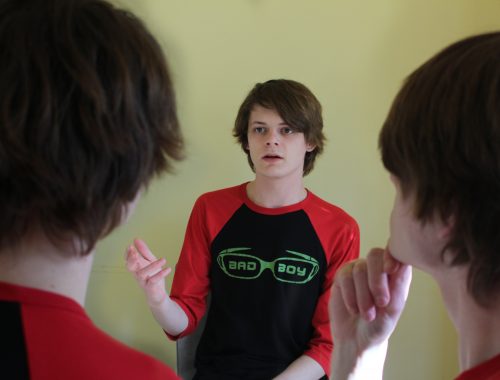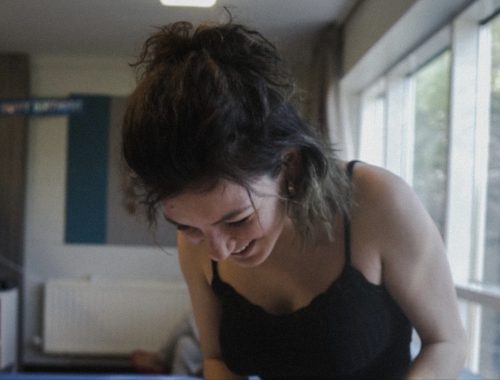Sixty versus One Hundred
Job interviews. I’m not sure which is worse, the preparation; cramming key words and technical jargon into your brain the week leading up to it, or agonising over every word you said to the panel as soon as you walk out of that room. Not to mention the interview itself.
Something which has always stuck with me is a piece of advice given to me my mother, the night before every important exam, she says, “If you don’t know it now, you’ll never know it.” And it’s true, knowing when to lay down the books and notes and accept that you cannot learn any more content is just as important as studying and adequate preparation. But what I have often failed to consider is that there is learning to be done after such experiences, not in the form of content but in the form of reflection, and it is an invaluable tool in improving how you will conduct yourself in your future endeavours.

Above is Gibbs’ Reflective Cycle, a method by which the application of the steps laid out to a particular experience helps one to derive meaning from it through analysis and subsequently gain insight into how their actions, reactions and feelings affected the outcome. It bases itself on answering three main questions;
- What did I do?
- How did I do it? And
- What did I learn?
I will use this model and the above questions to analyse my performance in the simulated interviews.
“Simulation and reflection are widely recognized as educational methods that can promote learning about professional practice.” [2]
-Sheffield University
The job description I chose was for the role of Broadcast Operator in Live TV Production. The role was a graduate position with a company in Northern Ireland, the outline specified that the company were seeking an applicant with either a minimum of two years relevant experience, or a relevant degree level qualification and an interest in the industry with a willingness to learn on the job. I felt the latter applied to me, so I began preparation.
When preparing interview questions for the others in my group, I thought of my own job description and came up with 30 second, improvised answers to the questions. This was in an effort to make sure I consciously applied the STAR method when I was in real interview, and did not add irrelevant information to my answer in a panic. I used this as a small exercise, before I began proper preparation

This was not of course my first interview, but it was my first interview in the context of my chosen professional field. So, I was a bit inexperienced, combined with feeling nervous there were areas of preparation I feel I could have focused on more. Such as really ensuring I knew about the company itself and some of the expectations of the job. I think I focused too wholly on the interview aspects of presentation and technique and forgot that contextual preparation was just as vital.
During the interview, I was inevitably asked about my experience. Due to the aforementioned desirability criteria, I was very honest about my experience. I spoke about my degree and my limited experience in television, but highlighted that the wealth of my experience was in radio and highlighted the similarities, my basis of knowledge and a willingness to learn in a new context. This was an effort to really connect with the panel, and I kept thinking of advice given to us by careers advisor Emma Lennox that an interview is a two-way conversation to discuss myself and my skills, and the panelists wanted me to succeed – they were not there to confuse or unsettle me.
This was inspired by a statistic taken from a survey conducted byMohr in Harvard Business Review, that “…men apply for a job when they meet only 60% of the qualifications, but women apply only if they meet 100% of them.” [4]

I was pleased when I received my feedback to notice that my peers interviewing me had taken note of this. I also felt that my conscious application of the STAR technique aided me in conveying this through the use of appropriate examples.

I think the simulated interview process was valuable. I actively tried to keep in my mind that the reason I was interviewing was in order for the panel to assess my ability to do the job well, not just to interview well.
Given the opportunity to do it again, I would keep in mind that I am the only one there to advocate for myself, so to make sure that I do so to the best of my ability. In my opinion, reminding myself of this fact throughout was more helpful to me than any technique I researched, and in fact supplemented the use of these techniques and helped me to understand how to utilise them better. I would make sure that I know a little more about the company, and the specific requirements of the job, and consider in my preparation how questions could be asked of me demonstrating my ability to meet said requirements. I think every interview is a good opportunity to gain experience, and in light of this I would also take advantage of the opportunity to ask the panelists questions afterwards.
Works Cited:
- University of Sheffield. (n.d.). Reflective Practice – University Study – Study Skills – 301 – SSiD – The University of Sheffield. 301: Academic Skills Centre. Retrieved 16 February 2022, from https://www.sheffield.ac.uk/ssid/301/study-skills/university-study/reflective-practice
- S.E. Husebø, S. O’Regan, D. Nestel, Reflective Practice and Its Role in Simulation, Volume 11, Issue 8, 2015,Pg.368
- Joyne, S. (2020, March 24). Interviewing: Behavioral Interviews and the STAR Method – Hire a Tiger Blog. Hampden-Sydney College Career Centre. Retrieved 16 February 2022, from http://careercenter.hsc.edu/2020/03/24/interviewing-behavioral-interviews-and-the-star-method/
- Mohr, T. S. (2021, November 2). Why Women Don’t Apply for Jobs Unless They’re 100% Qualified. Harvard Business Review. Retrieved 15 February 2022, from https://hbr.org/2014/08/why-women-dont-apply-for-jobs-unless-theyre-100-qualified
You May Also Like

Shocker, Tom also sucks at interviews!
18 February 2022
Surprisingly Worthwhile
18 February 2022
